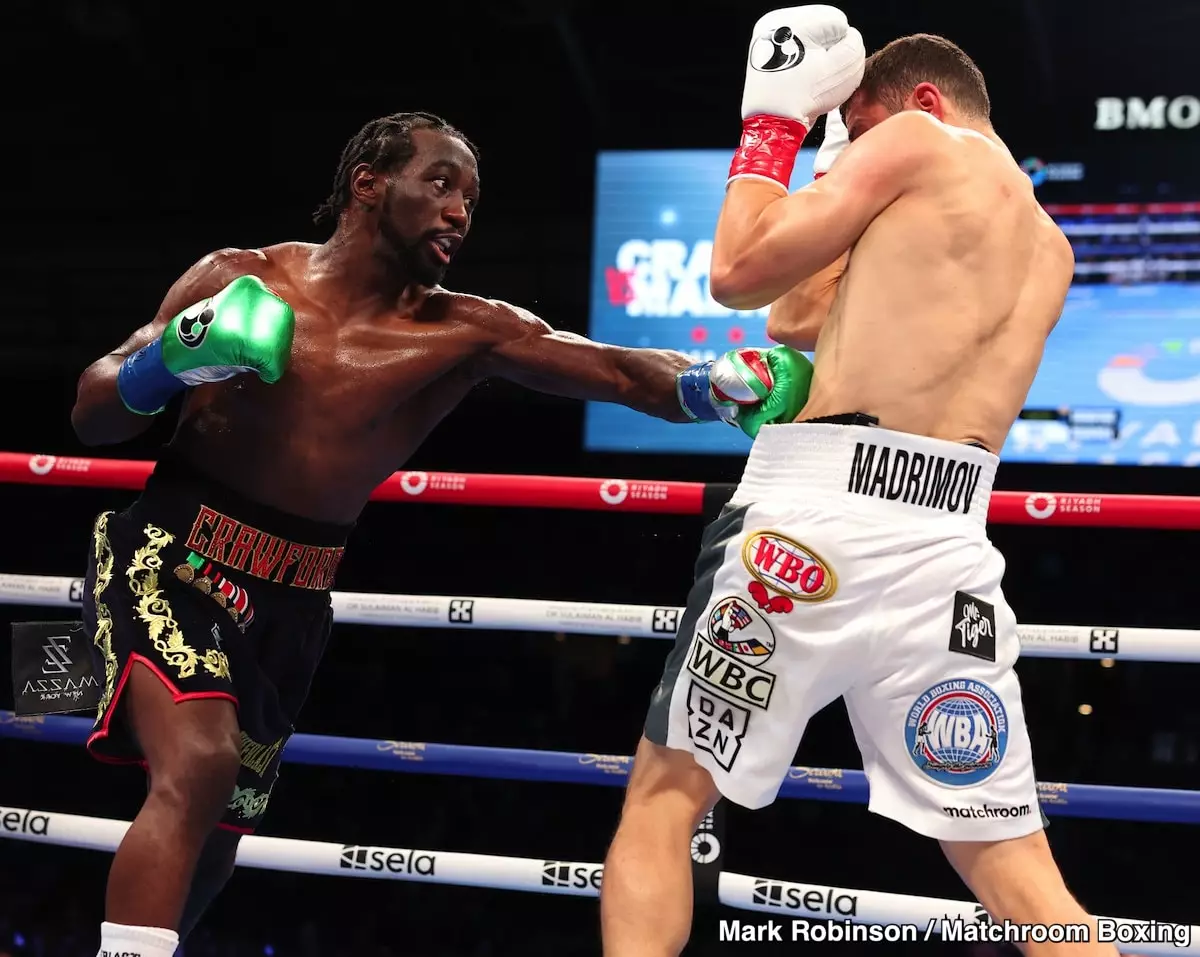Tim Bradley, a former world champion turned boxing commentator, has stirred up the boxing community with his bold assertion regarding a potential showdown between Terence Crawford and Canelo Alvarez in 2025. By claiming that Crawford could beat Canelo, Bradley highlights the nuanced and often unpredictable nature of boxing—the sport that fuels fan debates and speculation. However, this particular assertion begs a critical examination of both fighters’ recent performances, fight styles, and the realities of their respective positions in the boxing landscape.
At the age of 37, Terence Crawford remains a mystery wrapped in enigma. With an immaculate record of 41 wins, 31 by knockout, his stature in boxing is formidable, yet it is marred by his age and recent performances. Crawford’s foray into the 154-pound category was marked by a less-than-stellar victory over Israil Madrimov, which left many boxing aficionados questioning whether he still possesses the elite talent of his earlier career.
On the other side of the ring stands Canelo Alvarez, a seasoned fighter known for his power and technical ability, boasting a record of 62 wins, 39 by knockout. Canelo’s achievements—a unified super middleweight champion—underscore not only his physical prowess but also his ring intelligence. His fights often showcase a blend of strategic acumen and brute strength, which together create a nearly impenetrable arsenal against many contenders.
Despite Bradley’s assertion that Crawford could “beat the brakes off” Canelo, the reality paints a different picture. For someone to dethrone Alvarez, they would need to possess a distinct advantage in speed, power, or tactical adaptability—qualities that may not align with Crawford’s demonstrated capabilities at this juncture of his career.
Critics of Bradley’s prediction point specifically to Crawford’s last fight against Madrimov as proof of diminishing returns. While Crawford secured a unanimous decision, his performance suggested a fighter who had not fully adapted to the challenges posed by a new weight class. Contrast that with Canelo’s performance against top-tier opponents, where he has demonstrated not just survival, but mastery of fight scenarios, even against younger competitors.
Furthermore, Crawford has faced significant opposition criticism for lacking notable victories against elite fighters in his prime. His unquestionable skill set remains apparent, yet many fans and analysts contend that facing someone like Canelo, who consistently fights against the best, may be beyond Crawford’s current trajectory. Hence, the prospect of him beating someone as seasoned and strategically astute as Canelo becomes increasingly implausible.
In addition to his thoughts on Crawford’s potential, Bradley also directed his focus to Devin Haney, suggesting he return to his roots in Mexico to regain his form. This theory, while nostalgic, reflects a deeper misunderstanding of how fighters evolve and react to setbacks in professional boxing. Each fighter’s path is unique, and merely revisiting previous environments or training methods does not guarantee recovery from defeats or slumps.
Haney’s tumultuous journey post-Ryan Garcia reveals the delicate balance fighters must maintain between growth and challenge. Going back to Mexico may not magically restore his prowess, and it risks prolonging his difficulties instead. In truth, comprehensive strategies involving tailored training, exposure to high-level opponents, and psychological resilience often prove more effective than reverting to previous locations or training paradigms.
Lastly, the public’s reaction to potential mismatches in high-profile fights cannot be disregarded. Should Crawford and Canelo meet and the bout ends in a predictable manner, it would not only deflate fan expectations but could also tarnish the reputations of those involved in promoting the event. Boxing thrives on anticipation and uncertainty, yet such predictions can diminish that very allure if outcomes feel predetermined.
The general consensus surrounding Bradley’s commentary reveals a reluctance to accept that the boxing landscape has shifted, emphasizing how narratives shape public perception. As fans and analysts dissect these opinions, the discourse continues to thrive—unraveling the complexities of talent, strategy, and the gritty tapestry that is boxing, fostering a rich environment for further debate and speculation.


Leave a Reply